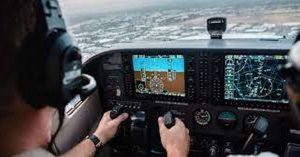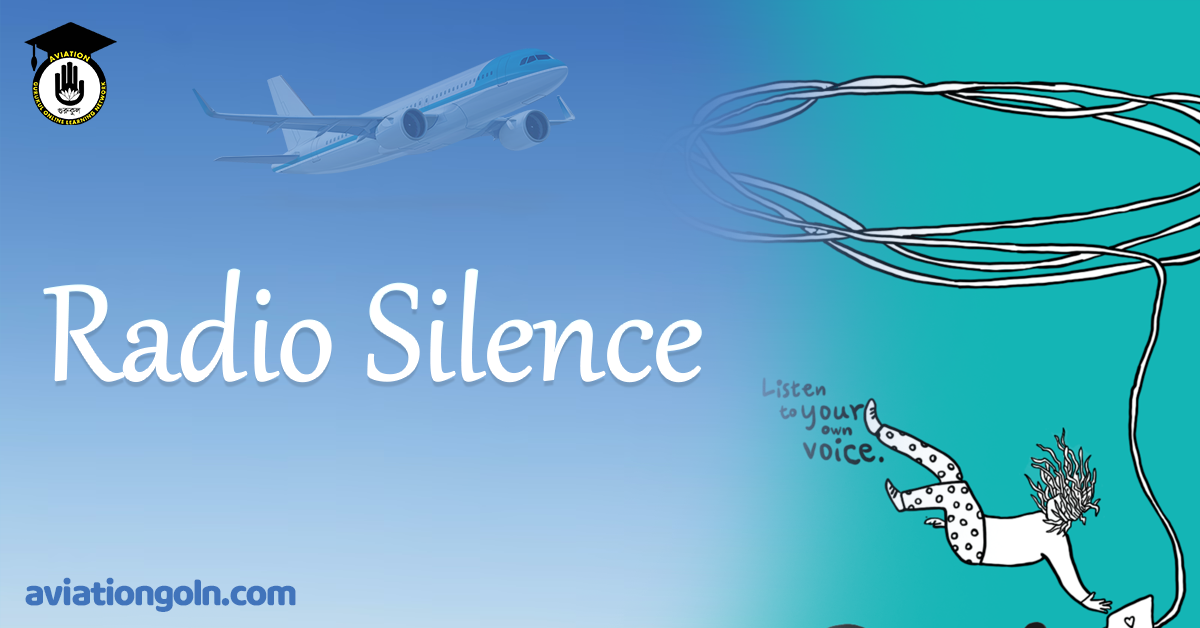Radio Silence is a specialized air-ground communication procedure used during emergencies to ensure that a frequency channel remains clear for an aircraft in distress. By imposing radio silence, air traffic controllers (ATCOs) can create a communication environment where the affected crew and controllers exchange essential information without interruptions or distractions.
The primary purpose of radio silence is to maximize the efficiency and safety of emergency handling by:
- Ensuring frequency availability exclusively for the distressed aircraft.
- Facilitating clear information exchange, as pilots may need time to describe the situation and ATC may need to provide detailed navigational or procedural assistance.
- Reducing distractions, so both flight crew and ATCOs can remain focused on managing the emergency rather than dealing with routine traffic.

Radio Silence
Why Radio Silence Matters
- Enhanced Emergency Response
- Emergencies such as engine failures, cabin depressurization, or medical issues require immediate and uninterrupted communication.
- Radio silence helps minimize time lost in repeated transmissions caused by congested frequencies.
- Improved Situational Awareness
- ATCOs can concentrate fully on the distressed aircraft’s needs without juggling routine requests from other traffic.
- Pilots in distress receive navigational assistance, vectors, or weather information without confusion.
- Safety of Other Traffic
- Prevents unnecessary frequency congestion.
- Ensures other aircraft are not misled by messages intended for the emergency flight.
Methods of Imposing Radio Silence
There are two main strategies for implementing radio silence:
1. Suppressing Calls from Other Aircraft
- ATC instructs all other aircraft on the frequency to stop transmitting.
- Phraseology is direct and unambiguous, e.g.:
- “All stations [ATS unit], stop transmitting. Mayday.”
- Aircraft are expected to maintain silence until ATC cancels the restriction.
2. Transferring Non-Emergency Traffic to Another Frequency
- Controllers may move other aircraft to an alternate frequency, leaving the distressed aircraft alone on the primary channel.
- This method minimizes congestion but comes with risks:
- Increased cockpit workload for non-emergency aircraft.
- Higher possibility of frequency confusion during the transfer.
- ICAO generally discourages transferring the emergency aircraft itself, as their workload is already critical.
Decision-Making by ATC
Whether or not to impose radio silence—and which method to apply—depends on:
- Severity of the emergency (e.g., engine fire vs. minor technical issue).
- Traffic density on the frequency.
- Phase of flight (e.g., approach phase requires more immediate attention).
- Availability of backup frequencies for rerouting unaffected aircraft.
Standard Phraseology
Imposing Radio Silence
- General call:
- “All stations [ATS unit], stop transmitting. Mayday.”
- Specific aircraft:
- “[Aircraft callsign], stop transmitting. Mayday.”
Terminating Radio Silence
- When the emergency is resolved:
- “All stations [ATS unit], distress traffic ended.”
Transferring Other Aircraft to a Different Frequency
- Example (from UK CAA CAP 413):
- “Mayday, [callsign of aircraft in distress], remain this frequency. Break, break. All other aircraft, contact [ATS unit] [frequency], out.”
Notes and Considerations
- The CAP 413 guidance (UK CAA) may differ from ICAO provisions, as ICAO does not explicitly prescribe “all stations” transfers.
- “All stations” calls carry risk of frequency misinterpretation and may conflict with local ATC procedures.
- National authorities may have different phraseology standards. Pilots and ATCOs should always be trained to follow regional regulations while adhering to ICAO best practices.
Example Scenario of Radio Silence in Practice
Scenario:
A twin-engine aircraft departing London reports severe smoke in the cockpit. The crew declares Mayday.
- Pilot Action
- Broadcasts “Mayday, Mayday, Mayday…” and explains situation.
- Requests immediate return to departure airport.
- ATCO Action
- Issues the call: “All stations, London Control, stop transmitting. Mayday.”
- Focuses exclusively on distressed aircraft, providing headings, vectors, and direct routing.
- Transfers other aircraft on the same frequency to an alternate channel.
- After Resolution
- When the aircraft lands safely, ATC transmits: “All stations, London Control, distress traffic ended.”
Result:
Radio silence ensured no interference, allowing ATC and the crew to manage the emergency effectively.
Risks of Not Imposing Radio Silence
- Frequency Congestion: Routine transmissions could block emergency calls.
- Loss of Critical Information: ATC may miss vital details from the distressed crew.
- Delayed Response: Every second counts in emergencies; distractions may worsen outcomes.
- Increased Stress Levels: Pilots in distress may become overwhelmed by unnecessary chatter.
